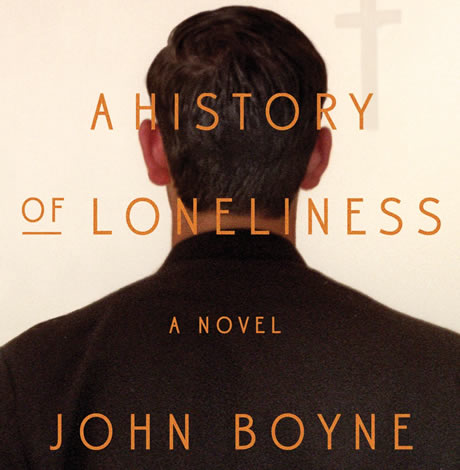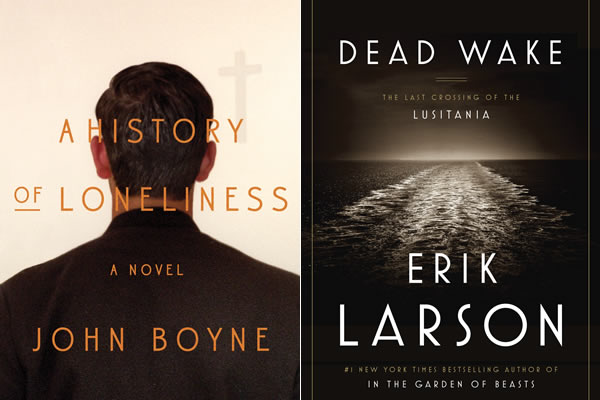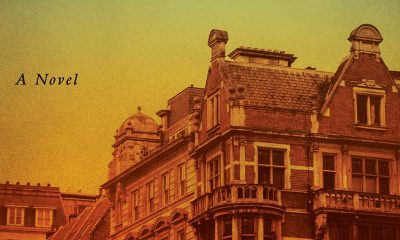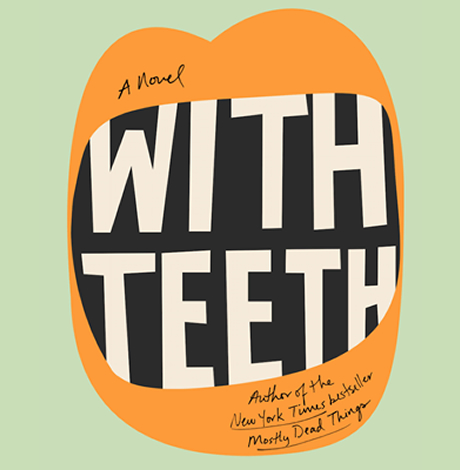Books
YEAR IN REVIEW 2015: books (‘Loneliness’ and beyond)
Scandal, historical intrigue and surprise among year’s best books


Among the year’s best books are the harrowing ‘A History of Loneliness’ for fiction and ‘Dead Wake,’ a heart-pounding true story of the sinking of the Lusitania.’ (‘History’ cover courtesy Farrar, Straus and Giroux; ‘Dead Wake’ cover courtesy Crown Publishers)
As you look back over your year, there are a lot of things you notice.
You had fun — probably more than once. You had some really great meals with really great friends — also probably more than once. And in my case, there were books — definitely more than one. More than 300, but here are my top picks of 2015.
FICTION:
I always loved author John Boyne’s books; in fact, “The Absolutist” is one of my top five ever. But “A History of Loneliness” has to be right up there. In this book, a priest explains his relationship with a colleague who always seems to be moved around from parish to parish. What’s wrong will slowly dawn on you, but our narrator is a little slower on the uptake. What happens will make you want to crawl into bed and cry for an hour.
In “One Night” by Eric Jerome Dickey, a woman who has nothing left to lose meets a man who has everything in life. She needs money. He decides that he needs her and they embark on a one-night stand that’s almost unbearably taut. I loved the mixture of this book: psychological, erotic and sass.
Also tightly written is “The Magician’s Lie” by Greer Macallister. It’s the story of a small-town sheriff who finally captures a killer who’s been on the loose for some time. She’s a slippery one — an illusionist — and he hopes she’ll offer a confession. Instead, she tells him a story. The sheriff doesn’t know what’s lie and what’s not — and neither will you in this wrap-you-up tale with an ending you totally won’t see coming.
Remember what it was like to be a kid? You’ll revisit it again in “My Grandmother Asked Me to Tell You She’s Sorry” by Fredrik Backman, the story of a 7-year-old who loses her grandmother. Else is precocious, Granny was her only real friend and she was somewhat of a rascal. And as proof of that, before she dies, Granny leaves Elsa with an assignment.
Part fantasy, part childhood, all charming, this book from the author of “A Man Called Ove” is a wonderful winner.
“The Hired Girl” by Laura Amy Schlitz might be found on the young adult section of your bookstore or library, but I definitely thought it was more of an adult novel. It’s the story of a teenager who leaves her family because her father is abusive, and she moves to Baltimore to become a housemaid. It’s 1911, she’s Catholic, but her new employers are Jewish and the learning curve is steep. There’s adventure, heartbreak, romance and history here — and yes, you can still share it with your favorite teen.
NON-FICTION:
You may find “Dead Wake: The Last Crossing of the Lusitania” by Erik Larson on other Best Of lists this year, for a reason. This is a historical account of the sinking of a ship but there’s more: Larson is known to tease a story out, adding small side notes and spinning off in ways that enhance the tale he’s telling. That makes for a fascinating, heart-pounding true account you won’t want to put down.
“Bobby Wonderful: An Imperfect Son Buries His Parents” by Bob Morris made me laugh, and it made me cry a small creek. It’s the story of Morris’ mother, her life and her death, and the relationships she had with her family. It’s also a gay man’s love letter to his very supportive Mom, and it definitely lives up to its name: it’s wonderful.
Though it may sound odd, “Rain: A Natural and Cultural History” by Cynthia Barnett put me in a good mood when I read it — maybe because it was as refreshing as its subject. Here, Barnett writes about all aspects of that stuff that falls from the sky – historically, culturally and meteorologically speaking — and she sprinkles readers with facts, disasters and sunshine. This book simply made me happy, which is why it’s on this list.
As a lover of all things scandalous, I found “Good Mourning: A Memoir” by Elizabeth Meyer with Caitlin Moscatello to be absolutely delicious. After Meyer lost her father, a high-powered lawyer, she realized that she was rather fascinated with death, just a little bit. So she marched into one of Manhattan’s premiere funeral homes, asked for a job and ended up being a funeral planner (think: services that are anything but dead). I loved this book for its behind-the-scenes peeks and for the tales that only an insider can tell.
There’s a tie for the last slot on this non-fiction list: I loved “Rosemary” by Kate Clifford Larson for its jaw-dropping look at history, the Kennedys and power gone wrong. I also couldn’t put down “Lights Out” by Ted Koppel, a cautionary, scare-the-daylights-out-of-you book on what could happen if our electric grid and internet infrastructure are attacked by terrorists.
Books
New book offers observations on race, beauty, love
‘How to Live Free in a Dangerous World’ is a journey of discovery

‘How to Live Free in a Dangerous World: A Decolonial Memoir’
By Shayla Lawson
c.2024, Tiny Reparations Books
$29/320 pages
Do you really need three pairs of shoes?
The answer is probably yes: you can’t dance in hikers, you can’t shop in stilettos, you can’t hike in clogs. So what else do you overpack on this long-awaited trip? Extra shorts, extra tees, you can’t have enough things to wear. And in the new book “How to Live Free in a Dangerous World” by Shayla Lawson, you’ll need to bring your curiosity.

Minneapolis has always been one of their favorite cities, perhaps because Shayla Lawson was at one of Prince’s first concerts. They weren’t born yet; they were there in their mother’s womb and it was the first of many concerts.
In all their travels, Lawson has noticed that “being a Black American” has its benefits. People in other countries seem to hold Black Americans in higher esteem than do people in America. Still, there’s racism – for instance, their husband’s family celebrates Christmas in blackface.
Yes, Lawson was married to a Dutch man they met in Harlem. “Not Haarlem,” Lawson is quick to point out, and after the wedding, they became a housewife, learned the language of their husband, and fell in love with his grandmother. Alas, he cheated on them and the marriage didn’t last. He gave them a dog, which loved them more than the man ever did.
They’ve been to Spain, and saw a tagline in which a dark-skinned Earth Mother was created. Said Lawson, “I find it ironic, to be ordained a deity when it’s been a … journey to be treated like a person.”
They’ve fallen in love with “middle-American drag: it’s the glitteriest because our mothers are the prettiest.” They changed their pronouns after a struggle “to define my identity,” pointing out that in many languages, pronouns are “genderless.” They looked upon Frida Kahlo in Mexico, and thought about their own disability. And they wish you a good trip, wherever you’re going.
“No matter where you are,” says Lawson, “may you always be certain who you are. And when you are, get everything you deserve.”
Crack open the front cover of “How to Live Free in a Dangerous World” and you might wonder what the heck you just got yourself into. The first chapter is artsy, painted with watercolors, and difficult to peg. Stick around, though. It gets better.
Past that opening, author Shayna Lawson takes readers on a not-so-little trip, both world-wide and with observant eyes – although it seems, at times, that the former is secondary to that which Lawson sees. Readers won’t mind that so much; the observations on race, beauty, love, the attitudes of others toward America, and finding one’s best life are really what takes the wheel in this memoir anyhow. Reading this book, therefore, is not so much a vacation as it is a journey of discovery and joy.
Just be willing to keep reading, that’s all you need to know to get the most out of this book. Stick around and “How to Live Free in a Dangerous World” is what to pack.
The Blade may receive commissions from qualifying purchases made via this post.
Books
Story of paralysis and survival features queer characters
‘Unswerving: A Novel’ opens your eyes and makes you think

‘Unswerving: A Novel’
By Barbara Ridley
c.2024, University of Wisconsin Press
$19.95 / 227 pages
It happened in a heartbeat.
A split-second, a half a breath, that’s all it took. It was so quick, so sharp-edged that you can almost draw a line between before and after, between then and now. Will anything ever be the same again? Perhaps, but maybe not. As in the new book “Unswerving” by Barbara Ridley, things change, and so might you.

She could remember lines, hypnotizing yellow ones spaced on a road, and her partner, Les, asleep in the seat beside her. It was all so hazy. Everything Tave Greenwich could recall before she woke up in a hospital bed felt like a dream.
It was as though she’d lost a month of her life.
“Life,” if you even wanted to call it that, which she didn’t. Tave’s hands resembled claws bent at the wrist. Before the accident, she was a talented softball catcher but now she could barely get her arms to raise above her shoulders. She could hear her stomach gurgle, but she couldn’t feel it. Paralyzed from the chest down, Tave had to have help with even the most basic care.
She was told that she could learn some skills again, if she worked hard. She was told that she’d leave rehab some day soon. What nobody told her was how Les, Leslie, her partner, girlfriend, love, was doing after the accident.
Physical therapist Beth Farringdon was reminded time and again not to get over-involved with her patients, but she saw something in Tave that she couldn’t ignore. Beth was on the board of directors of a group that sponsored sporting events for disabled athletes; she knew people who could serve as role models for Tave, and she knew that all this could ease Tave’s adjustment into her new life. It was probably not entirely in her job description, but Beth couldn’t stop thinking of ways to help Tave who, at 23, was practically a baby.
She could, for instance, take Tave on outings or help find Les – even though it made Beth’s own girlfriend, Katy, jealous.
So, here’s a little something to know before you start reading “Unswerving”: author Barbara Ridley is a former nurse-practitioner who used to care for patients with spinal cord injuries. That should give readers a comfortable sense of satisfaction, knowing that her experiences give this novel an authenticity that feels right and rings true, no faking.
But that’s not the only appeal of this book: while there are a few minor things that might have readers shaking their heads (HIPAA, anyone?), Ridley’s characters are mostly lifelike and mostly likable. Even the nasties are well done and the mysterious character that’s there-not-there boosts the appeal. Put everyone together, twist a little bit to the left, give them some plotlines that can’t ruined by early guessing, and you’ve got a quick-read novel that you can enjoy and feel good about sharing.
And share you will because this is a book that may also open a few eyes and make readers think. Start “Unswerving” and you’ll (heart) it.
The Blade may receive commissions from qualifying purchases made via this post.
Books
Examining importance of queer places in history of arts and culture
‘Nothing Ever Just Disappears’ shines with grace and lyrical prose

‘Nothing Ever Just Disappears: Seven Hidden Queer Histories’
By Diarmuid Hester
c.2024, Pegasus Books
$29.95/358 pages
Go to your spot.
Where that is comes to mind immediately: a palatial home with soaring windows, or a humble cabin in a glen, a ramshackle treehouse, a window seat, a coffeehouse table, or just a bed with a special blanket. It’s the place where your mind unspools and creativity surges, where you relax, process, and think. It’s the spot where, as in the new book “Nothing Ever Just Disappears” by Diarmuid Hester, you belong.

Clinging “to a spit of land on the south-east coast of England” is Prospect Cottage, where artist and filmmaker Derek Jarman lived until he died of AIDS in 1994. It’s a simple four-room place, but it was important to him. Not long ago, Hester visited Prospect Cottage to “examine the importance of queer places in the history of arts and culture.”
So many “queer spaces” are disappearing. Still, we can talk about those that aren’t.
In his classic book, “Maurice,” writer E.M. Forster imagined the lives of two men who loved one another but could never be together, and their romantic meeting near a second-floor window. The novel, when finished, “proved too radical even for Forster himself.” He didn’t “allow” its publication until after he was dead.
“Patriarchal power,” says Hester, largely controlled who was able to occupy certain spots in London at the turn of the last century. Still, “queer suffragettes” there managed to leave their mark: women like Vera Holme, chauffeur to suffragette leader Emmeline Pankhurst; writer Virginia Woolf; newspaperwoman Edith Craig, and others who “made enormous contributions to the cause.”
Josephine Baker grew up in poverty, learning to dance to keep warm, but she had Paris, the city that “made her into a star.” Artist and “transgender icon” Claude Cahun loved Jersey, the place where she worked to “show just how much gender is masquerade.” Writer James Baldwin felt most at home in a small town in France. B-filmmaker Jack Smith embraced New York – and vice versa. And on a personal journey, Hester mourns his friend, artist Kevin Killian, who lived and died in his beloved San Francisco.
Juxtaposing place and person, “Nothing Ever Just Disappears” features an interesting way of presenting the idea that both are intertwined deeper than it may seem at first glance. The point is made with grace and lyrical prose, in a storyteller’s manner that offers back story and history as author Diarmuid Hester bemoans the loss of “queer spaces.” This is really a lovely, meaningful book – though readers may argue the points made as they pass through the places included here. Landscapes change with history all the time; don’t modern “queer spaces” count?
That’s a fair question to ask, one that could bring these “hidden” histories full-circle: We often preserve important monuments from history. In memorializing the actions of the queer artists who’ve worked for the future, the places that inspired them are worth enshrining, too.
Reading this book may be the most relaxing, soothing thing you’ll do this month. Try “Nothing Ever Just Disappears” because it really hits the spot.
The Blade may receive commissions from qualifying purchases made via this post.
-

 Africa4 days ago
Africa4 days agoCongolese lawmaker introduces anti-homosexuality bill
-

 District of Columbia18 hours ago
District of Columbia18 hours agoReenactment of first gay rights picket at White House draws interest of tourists
-

 World4 days ago
World4 days agoOut in the World: LGBTQ news from Europe and Asia
-

 Arizona23 hours ago
Arizona23 hours agoAriz. governor vetoes anti-transgender, Ten Commandments bill











